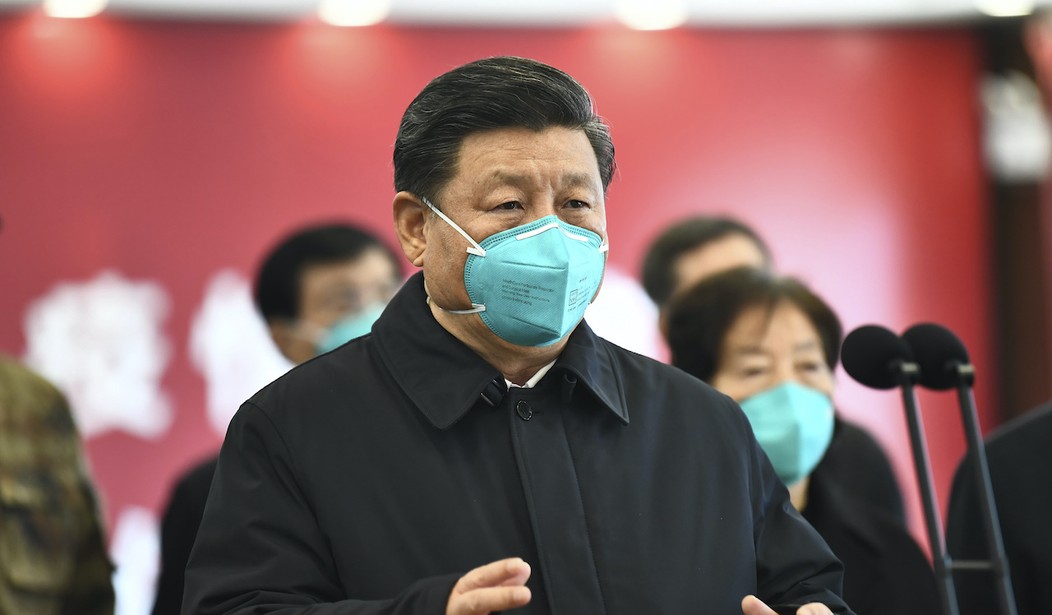A predictable update to Monday’s post about one of the world’s biggest cities entering one of China’s toughest lockdowns since Wuhan 2020. “Shanghai’s modern streets have been transformed into a post-apocalyptic landscape,” CBS reported this morning, “with police checkpoints manned by workers in hazmat suits and residents barricaded into their homes.” They’re not exaggerating. Here’s what a city of 26 million people looks like when a totalitarian government gets serious about restrictions.
Ghost town — Shanghai in an eerie quiet lockdown. With 26 million official residents*, Shanghai is one of the most populated cities on Earth. It looks like a movie—but it’s real.
📌You can also spot the isolation centers at the 40 sec mark.
*Undocumented locals=>millions more. pic.twitter.com/TS0btjGueO
— Eric Feigl-Ding (@DrEricDing) March 30, 2022
SHANGHAI—Lockdown Ghost City 2022. The normally bustling Bund & Nanjing Road shopping districts are devoid of people. This is next to impossible in a city of 25-35 million, yet here we are.
P.s. I was born in #Shanghai. My dad once worked in the clock tower building. pic.twitter.com/xIf9ERvMqq
— Eric Feigl-Ding (@DrEricDing) April 1, 2022
The new lockdown was ordered after a surge in COVID cases spooked the Chinese government. They’ve been watching the mega-outbreaks in Hong Kong and South Korea and calculating, quite reasonably, that runaway transmission on the Chinese mainland would be a catastrophe. Their homemade vaccines don’t seem to work great against Omicron and tens of millions of Chinese senior citizens are either unvaccinated or undervaccinated. They’re stuck with their “zero COVID” policy to try to snuff out the threat.
Brave sources at a Shanghai hospital are whispering to western reporters that that policy hasn’t been as successful lately as China has let on.
Two orderlies at the Shanghai Donghai Elderly Care Hospital said in interviews that the virus was spreading widely among the mostly older patients in the facility, and that people had died on each of the past three days. The two, who declined to be named for fear of losing their jobs, said that on a recent night they had been asked to carry a body into a room where other bodies were being stored…
The crisis in the Donghai hospital lays bare a deeper challenge: how to protect older people, who are already more vulnerable to the virus, particularly if they live in facilities besieged by it. Making matters worse, just over half of people 80 and older have had two shots, and less than 20 percent of people in that age group have received a booster, Zeng Yixin, a vice minister of the National Health Commission, said recently.
The WSJ has a long report today on the situation at Shanghai Donghai citing as sources no fewer than six orderlies who were brought in as replacements at the hospital after too much of the full-time staff fell ill with COVID. The official number of deaths in the city among senior citizens is zero, of course. The true, unofficial number? A bit more than that.
Six replacement orderlies at the city’s Donghai Elderly Care Hospital, brought in after previous caretakers were sent away to quarantine, told The Wall Street Journal that they had witnessed or heard of the recent removal of several bodies from the facility, where they said at least 100 patients had tested positive for Covid-19…
Separately, the son of a patient at the hospital said that his father had died within the past week, a friend of the son told the Journal, adding that others who had visited the hospital reported seeing the bodies of at least a dozen deceased patients…
Zhang Aizhen, an orderly who has worked in the hospital for more than a decade, said she was put on a bus on the night of March 19 with dozens of staff, including nurses and doctors, after she tested positive. She said she spent a week in a quarantine hotel, before being moved to a makeshift quarantine center in a stadium last weekend.
“Orderlies, nurses and doctors, we’re all infected,” she said.
It’s unclear to what extent the situation at the hospital resembles the situation in New York nursing homes under Andrew Cuomo in 2020, with infected elderly people being brought to the hospital for treatment and then inadvertently passing along the virus to other highly vulnerable elderly patients. The Journal flags a case of a man who missed his dialysis due to the lockdown, ended up needing to go to the hospital, then caught the virus there and died. If it’s true that huge numbers of the hospital staff are infected, though, then maybe the die is already cast: Patients are going to get it from doctors and nurses even if they don’t get it from other patients.
As for how long this outbreak has been going on and how far it might have spread, the hospital reportedly announced a week ago that it’s been “sealed off” since March 12. And restrictions in eastern Shanghai have been extended even though were supposed to have been lifted today as part of the five-day “staggered” lockdown across the city to facilitate mass testing. There’s no timeframe at the moment on when things might get back to normal. Hmmmm.
If you’re unfortunate enough to test positive in the city, you’re sent to a centralized quarantine facility to ride it out until you test positive — twice. There’s logic to that, removing an infected person from the uninfected population so that he can’t spread the virus. But conditions in the quarantine facilities aren’t great: “The first night he spent at the Shanghai hospital, Leaning slept in a freezing cold room on a mattress he said was only two inches thick. He was placed in a closed room with three other people, he said.” And you’re apt to find yourself whisked away to one even if you’re asymptomatic, which may increase your chances of developing a more serious case due to the close quarters in which quarantined patients find themselves:
Situation in #Shanghai. Source said “We are asymptomatic and everyone around us is sick and coughing.” #COVID19 pic.twitter.com/fuPkZ0UgoX
— Emma Leaning (@LeaningEmma) March 26, 2022
There’s no evidence yet of the sort of runaway epidemic that’s bedeviled Hong Kong — but if there were, Chinese authorities would be doing their best to suppress it. As such, absence of evidence isn’t evidence of absence. It’s worth noting, though, that Shanghai is so enormous and fears of a major outbreak in China are so intense that oil prices have already begun to slide in expectation of the global hit to demand if Omicron takes off there.
Here’s Scott Gottlieb sizing up the situation.
"It is worse than we know," says @ScottGottliebMD on COVID in China. "When you tell people to stay at home you're not ending transmission, what you are doing is forcing transmission into the homes." pic.twitter.com/rTUatGioQI
— Squawk Box (@SquawkCNBC) April 1, 2022









Join the conversation as a VIP Member